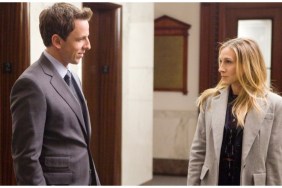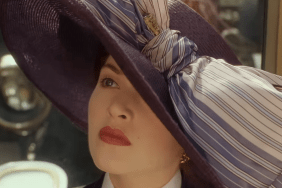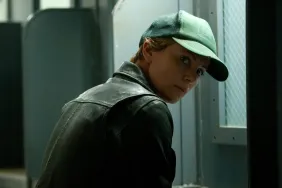
I saw Michael Curtiz’s 1945 adaptation of James M. Cain’s “Mildred Pierce” featuring Joan Crawford’s Oscar-winning performance back in 2005. But for the life of me I could hardly remember it before sitting down to watch HBO’s new five-part miniseries based on the same material. This is probably for the best. I do remember enjoying Curtiz’s feature, but this way there weren’t any available comparisons to cloud my opinion.
Directed and co-written by Todd Haynes (I’m Not There, Far from Heaven), “Mildred Pierce” has something of a Mike Nichols (Carnal Knowledge) feel to it as it treads dark territory, telling the devastating drama of a mother and her eldest child spanning ten years — from 1931 to 1940 in Glendale, California — of their tumultuous, up-and-down lives.

Persnickety at first, Mildred soon gives in and begins working as a waitress. It’s a position she finds shameful, though one she soon uses as a stepping stone to bigger things — a restaurant of her own. Throughout the ten years covered here Mildred’s family is consistently torn apart and brought back together, which makes for plenty of drama but can get a bit redundant.
The miniseries runs into issues with repetition, primarily due to its length. Just as much could have been accomplished in four hours as were in five as the rift between Mildred and her acid-tongued daughter Veda grows and grows. To that point I couldn’t help but wonder how much more compelling the story could have been had the film been called “Veda Pierce” rather than “Mildred Pierce.”
Morgan Taylor plays the younger Veda and is asked to tackle some rather heady dialogue as she spews presumptuous and arrogant comments her mother’s way. Things don’t improve when she learns her mother has taken on a waitress job and then some. Even into her late teens and early twenties, leading up to a climax truly worth the wait, Veda’s insolence becomes the story’s larger talking point. But this is where the miniseries loses its audience just as much as it impresses.
The question becomes a matter of what exactly is “Mildred Pierce” all about? The title gives us a rather obvious answer, but the miniseries doesn’t necessarily follow suit. Certainly a feminist tale to some extent, Mildred is the film’s guide as she juggles a life of independence as well as the men in her life. This includes her ex-husband, his ex-business partner Wally Burgan (James LeGros) and a handsome suitor in Monty Beragon (Guy Pearce). There’s also the restaurant, which soon grows into three. And her two daughters.
Amidst all this is Mildred, but it never feels as if she is the story, at least not entirely and it’s a disconnect that is further expanded once the story arrives at its end. It’s a point where had I been able to witness this story through Veda’s eyes it would have been revelatory.
Winslet is frequently seen baring it all as Mildred shares her bed with Wally and Monty. Was Veda witness to any of this? I got the feeling she may have been. She was, at the very least, aware of it. Both Veda and Monty tell Mildred of their private conversations about her, conversations that delve into subjects deeper than the fabulous pies she bakes and the success of her restaurant. Given Veda’s age, these conversations would have been potential sources for scenes one wouldn’t soon forget. Then there’s the ending…
Had “Mildred Pierce” actually been told through the eyes of Veda the ending remains the one aspect that simply must be told through Mildred’s eyes. I’m quite positive I would be shouting from the rooftops about how great this miniseries was had the story played out in that fashion. While Winslet is nude several times in this film, the final bit of nudity in “Mildred Pierce” is one of those rare moments I couldn’t imagine it any other way. Nudity, to me, is most often wasted frames, but here it’s a statement and one that lands with full force.
“Mildred Pierce” builds to this moment and, for better or worse, it’s a slow build. This can cause for moments of tedium just as much as continued anticipation. Haynes and co-writer Jon Raymond do find an appropriate balance of good and bad in telling this story. For as dark and noir-ish as this film can get, Haynes and Raymond know just how to make sure the audience isn’t consistently wallowing in depression.
One such scene comes just as Mildred is opening her first restaurant and things are getting backed up in the kitchen. Mare Winningham playing Ida, a waitress from Mildred’s first job, is on hand and comes in to help out. Winningham’s performance is one of those hard-nosed, get-the-job-done kind of women, but she also has a compassionate side that shines through here and it elevates not only this scene, but most of the scenes she’s featured in.
Winslet delivers a performance we’ve come to expect from the Oscar winner. Over the years she’s been able to master her emotions to such an extent that whether she’s laughing, crying or sighing you believe ever bit of it. Her fits of anger and her silent reflections land with all the rage and sentiment intended.
Playing Veda, a pair of actresses deserve recognition. Morgan Turner plays Veda aged 11 and she delivers as fine a performance as can be expected given the material. Dialogue debating piano concertos and occasionally dissecting the English language is mixed in with Veda’s juvenile pomp and frequent disdain for her mother. As the story moves along, Evan Rachel Wood steps in for years 17 through 21, but not much has changed. While the dialogue can be somewhat stiff at times, Wood gets some meaty prose to rip through, if not with words with just a glance.
The men in Mildred’s life begin with Mildred’s ex-husband Bert and Brian F. O’Byrne was up to the task of creating a sympathetic character that has his faults but lives up to his duties as a father and soon becomes the most respectable character of the Pierce lot. As Monty Beragon, Guy Pearce gets more of a muted role as his character is often a peripheral stimulant for the story until the latter moments when his smile bares more meaning and his words, upon reflection, represent a knife more than the caressing hand they originally appear to be.
The cinematography by the Oscar nominated Edward Lachman (Far from Heaven) is quite impressive and the score from Carter Burwell (True Grit) bounces from era-specific jazz, to the operatic to a moving sympathy. All the pieces of accomplishment are here, down to the top notch production design of Mark Friedberg.
“Mildred Pierce” isn’t a knockdown, drag out success as some aspects are a bit repetitive and the overall intention seems to be a bit of a question mark, but there is so much about it to enjoy it is impossible not to recommend. Each of the five segments also manage to find a noteworthy conclusion, though I would argue it is best viewed as one five hour experience as I was able to see it.
“Mildred Pierce” airs on HBO starting with Part One on and Two on Sunday, March 27 at 9:00-11:05 p.m. ET/PT. Part Three debuts on Sunday, April 3 (9:15-10:30 p.m.); Part Four and Part Five air on Sunday, April 10 ((9:15-10:30 p.m.). For a look at a 29-minute making of special and our gallery of 13 images from the miniseries click here. The first trailer has been added directly below.









